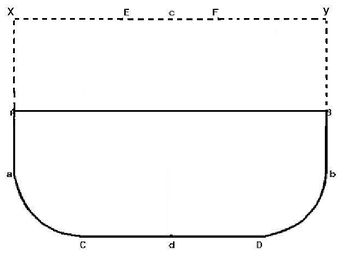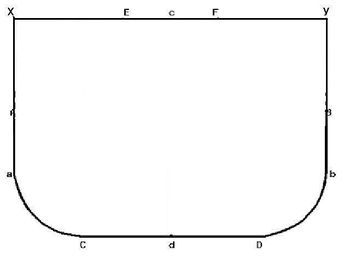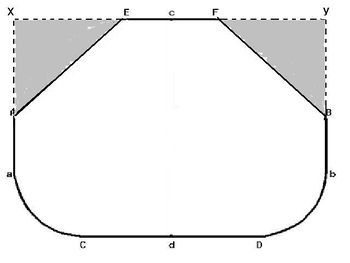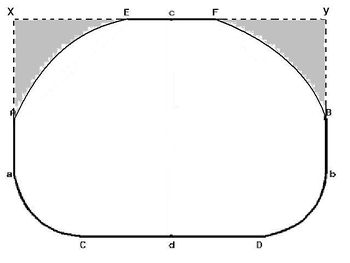Talk:Toga (Nova Roma)
Contents |
The primitive toga
This was original semicircular form in the republican times until the 1st century BC, which can be seen on this statue:
Development during the 2nd-1st centuries BC
In the end of the 2nd century BC, the aristocracy started to enlarge their toga to have a more impressive drapping. They increased the width of the material bigger and bigger through the decades:
Now they had a very large toga drapped the way seen on this statue, and a bit later, this version of drapping became even more popular at the end of the republic with the sinus, seen on this statue:
The classical toga - theories about its shape
But having this new fashion of drapping and the large measure of the material, they had problem with it's falling from the back and in the first part under the visible drapping downstage, caused by the lots of material in the corners "x" and "y". Also, they continued to increase the width to have a larger sinus, and it caused even more problems because of those "too much material" corners, so they simply started to cut down the corners:
An other hypothesis says that they cut it down in a semicircular way, so they had an oval, ellipsis-like shape:
SUMMARY: THE SHAPE OF THE CLASSICAL TOGA
File:Lentulus togatus.jpg I think that the even cutting is more likely because it is a more simple solution; anyway, they now had this variant of the toga that is called "imperial", and was worn during the principate. I think "classical toga" is a better name for this variant, because it is which became the most symbolical and characteristical version of the Roman toga.




